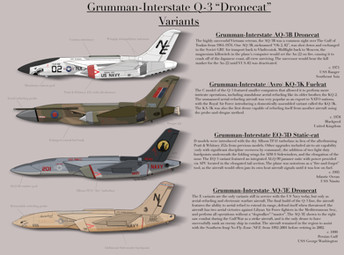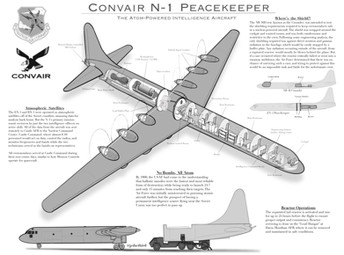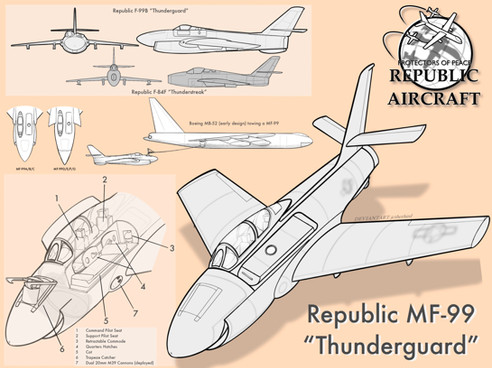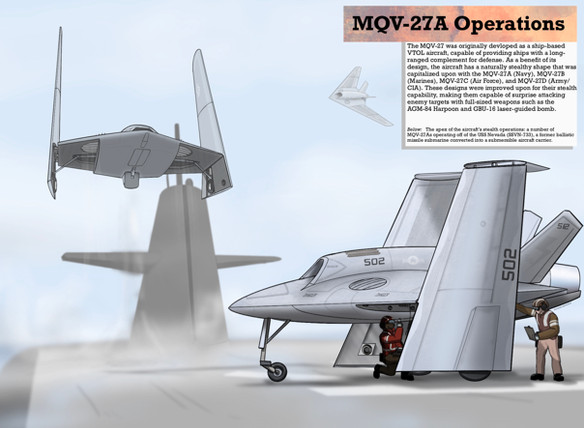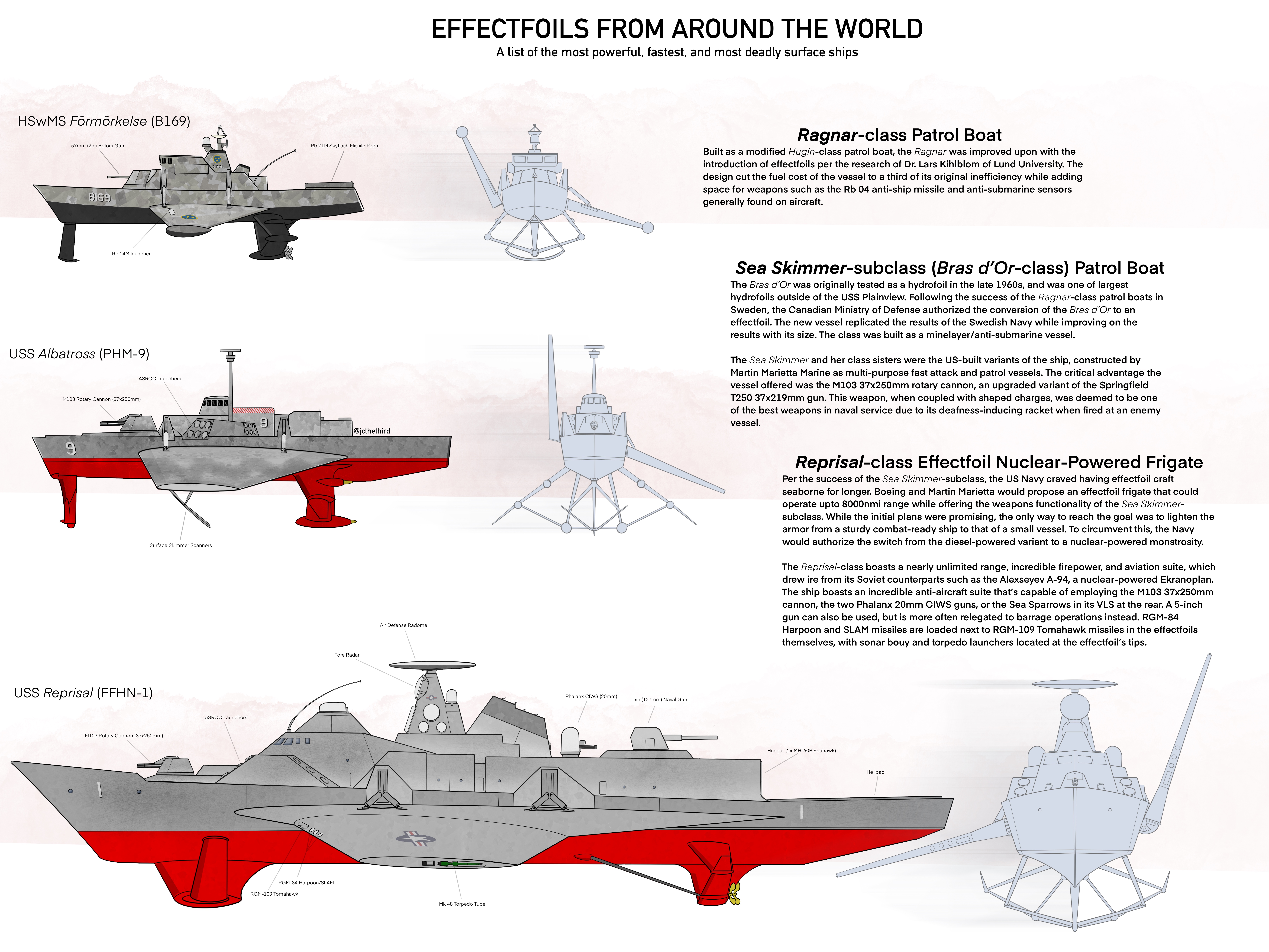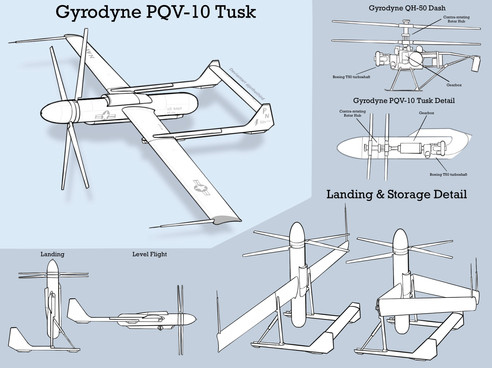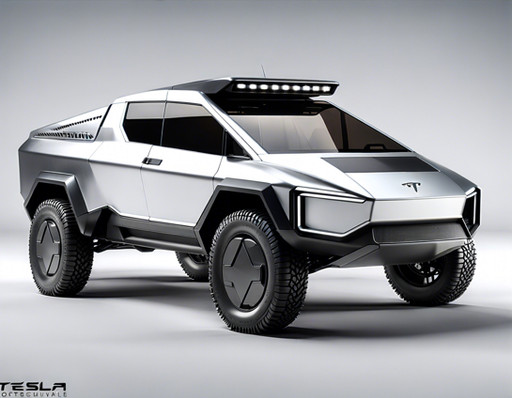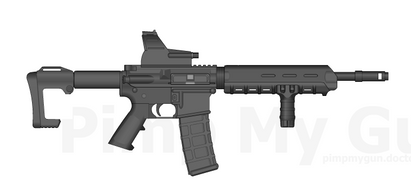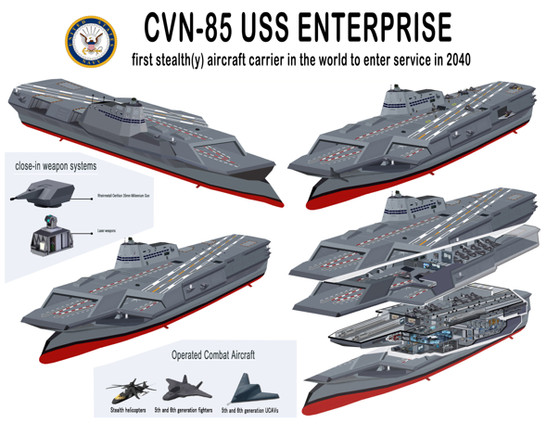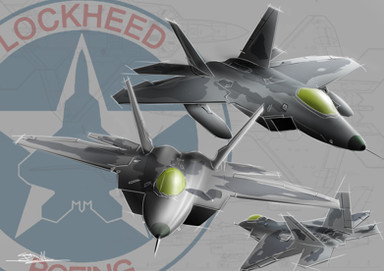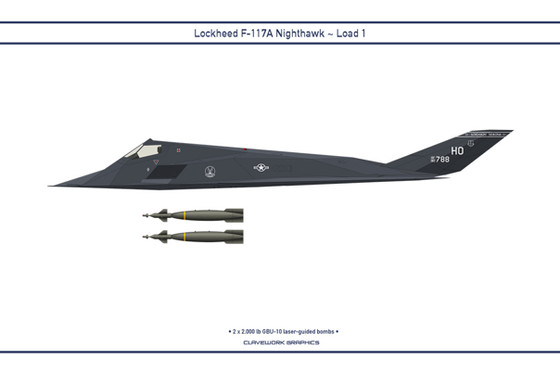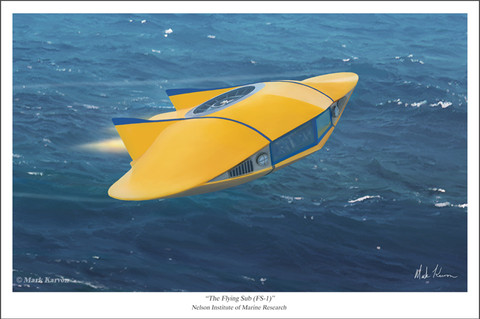HOME | DD
 jcthethird — Lockheed Martin MQV-27 Sentry variants
jcthethird — Lockheed Martin MQV-27 Sentry variants
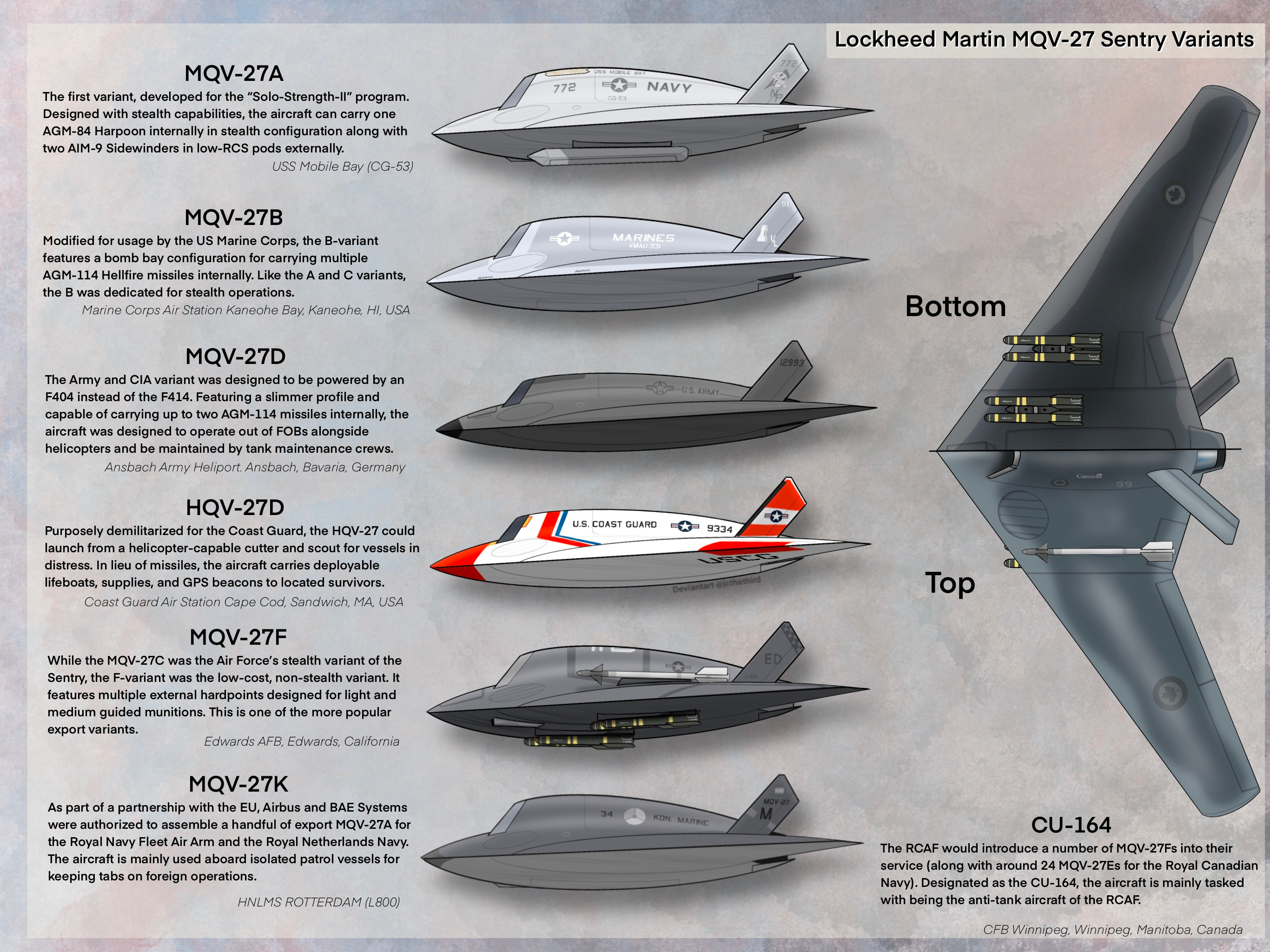
#coastguard #drone #rcaf #uav #uavs #coast_guard #aircraftdesign #aircraft #aircraftcarrier #airforce #airplane #airplanes #dutch #navy #ucav #usaf #usn #usnavy #air_force #aircraftconcept
Published: 2022-03-21 12:41:29 +0000 UTC; Views: 25662; Favourites: 210; Downloads: 81
Redirect to original
Description
*Note* everything shown below is a “what-if” scenario, based on real events and real situations, but ultimately fictional. Be sure to check out my other stuff as well from the past couple of days.The '''Lockheed Martin MQV-27 Sentry''' is a VTOL, stealth-capable, attack and reconaissance drone. The aircraft was developed using the RQ-170 Sentinel drone base, modified using a setup similar to the F-35B to drive a pair of VTOL fans towards the front of the aircraft using the F414 turbofan powerplant that would also provide vectored-thrust at the rear.
=






 esign and Development==
esign and Development=====Solo Strength Cruisers===
In 1992, the Department of Defense opted for the implementation of smaller patrol fleets for non-Cold War activities. These microgroups were determined to be even larger than necessary, as the Navy would indicate that they could make smaller patrol groups to even a single vessel. "Solo Strength Cruisers" was the proposal to a single missile cruiser or destroyer carry out all of the necessary roles of a combat battlegroup, such as anti-ship, artillery barrage, attack, strike, and anti-submarine operations. While most of the combat cruisers and destroyers already met the needs for artillery barrage, strike, and missile roles, the roles of anti-submarine and aviation operations were left open. For the immediate time being, the Navy opted for an upgraded variant of the [[Gyrodyne PQV-10 Tusk]], which was capable of deploying recoverable sonic buoys up to 300 miles in front of the cruisers and performing light anti-ship with the AGM-119D Penguin missile and complete patrol operations when needed. The Solo Strength-I operations were a success, but mainly because they were used in patrols of less volatile waters (such as the West and South Indian Ocean, the South Pacific, and the South Atlantic). In order for the vessel to be used in rougher waters such as the Persian Gulf, East/South China Sea, and the Sea of Japan, the vessels would need some stronger aerial functionality than the PQV-10 Tusk.
Following the introdcution of the RQ-170 into the CIA and USAF, Lockheed Martin would introduce a series of similar proposals for both the US Navy's aerial refueling drone program and the US Air Force's powered-glider recon aircraft. However, a strange DARPA project was generated as part of the US Navy's "Solo Strength-II" Cruiser program, where modified Ticonderoga Missile Cruisers, Arleigh Burke-class Destroyers, Littoral Combat Ships, and the new Cruiser Baseline series were modified to meet the specs of "Solo Strength-I". Among the demands for "Solo Strength-II" was the need for a VTOL aircraft that could operate off of the new modified helipads on the back while carrying a single AGM-84 HARPOON or SLAM, a depth charge, or a sonic buoy more than a 500 miles combat radius. While the initial plan was for the [[Gyrodyne PQV-10 Tusk]] to continue on this role, modernizing the aging design for land assault or full-scale combat was difficult, as the aircraft was not built to carry countermeasures or defenses of any kind.
Lockheed Martin engineers would copy the basis of the RQ-170 and simply "F-35"-it, introducing a pair of fans to either side of the RQ-170's intake powered off of a Calder Gearbox connected to the powerplant, and adding the rotating exhaust nozzle to the jet so that the aircraft could provide thrust when operating vertically. To allow for control on rough seas, the fans were designed with a dynamic Calder gearbox, which had the ability to adjust the bias of the fan depending on the angle of the ship. But the largest issue was brought up by the Navy regarding the two proposed aircrafts' footprints. Even with folding wings, the aircraft took up more space than anticipated when landing, with helipads running the risk of providing too little room for the aircraft to touch down on without having to greatly modify the ship's design. While proposals were drafted from Northrop Grumman for a variable sweep wing design that could adjust the aircraft's footprint before touching down, Lockheed Martin would offer something different. Their proposal would employ folding wings, but they were designed to fold while the aircraft was in the air, which significantly shrank the aircraft's landing footprint. Because of the height of the folded wings, an additional fold was incorporated that would bend halfway up the wing, but would only collapse when entering into the hangar bay. The lower half of the wing was designed to break from the wing root while the rest of the complete wing broke at the landing gear spar, which meant that a portion of the wing hung below the fuselage of the aircraft. Doing this provided multiple benefits, including the ability for a support strut to run between the wing and the exposed fuselage to further strengthen the wing when in vertical flight, as well as allowing the wing to cover up the fan fennestron exhaust ports when not in use to improve both aerodynamics and stealth cross sections. As a benefit over the Northrop Grumman design, the Lockheed Martin design included stealth capability and the ability to land and take off conventionally, which gave it a large leg up and ultimately gave it the final push over the Northrop Grumman design.
Before the Navy could make a selection, the US Air Force and US Marine Corps jumped in with interest in their own variants of the aircraft for VTOL operations in less-than-ideal regions. For the Air Force variant, the wings were made with a smaller sweep to allow for a higher rate of climb on take off as well as a shorter bomb bay for carrying Hellfire missiles. The Marine Corps copied the shorter bomb bay while still employing the same folding wing capabilities of the Navy variant. Later that year, the US Army would jump in requesting a similar design that featured a shorter off-the-ground stance and to be powered by the F404 for ease of maintenance. The Army variants were intended to all be set up with stealth capabilities.
A prototype test phase was carried out using scale models to test the wing folding, dynamic fan control, and VTOL stability before the first YQV-27 prototypes were launched for the US Navy and Air Force.
==Operational History==
The first Sentry aircraft were deployed in 2012 to the US Navy as a part of VAU-95 Wild Riders, a deployable squadron that was intended to deploy to various ships on cruise instead of a patrol helicopter. The US Army would receive their MQV-27Ds next, deploying them to FOBs in North Afghanistan to participate as part of Operation Silver Blade against the [[New Countries and Forces#Central Asian Liberation Front (CALF)|Central Asian Liberation Front (CALF)]] in remote Kyrgystan and Kazakhstan. The aircraft would score a pair of strikes on known CALF convoys and locations in remote Zhambyl, Kazakhstan, where confused CALF forces were forced to resort to retreating towards the Aral Sea.
===Afghanistan and Iraq===
The Sentry aircraft were used by all of the major branches of the military over the two countries, mainly for reconnaissance operations.
===Operation Silver Blade===
US forces would participate in the campaign against the Central Asian Liberation Front alongside Kazakhstan and Kyrgystan. Multiple airstrikes were carried out by the MQV-27 aircraft, mostly by the US Army out of FOB Balkh (25 km north of Balkh), while the CIA operate a small squadron out of Sharif near the USAF Camp Marmal.
===Iran Overwatch===
The MQV-27 was used aboard the [[Alaska-subclass Submarine Carrier|USS Nevada]] during the early 2010s as an easy method of launching stealth reconnaissance over the country. In 2014, an MQV-27 was used to destroy a Hezbollah warehouse in the town of Bam using a pair of Hellfire missiles.
===Libya and Arab Spring===
Prior to the Arab Spring, the MQV-27s aboard the [[Alaska-subclass Submarine Carrier|USS Alaska]] were dispatched to North Africa in order to monitor Libya operations. When the revolutions began to rapidly expand, the US Navy was ordered to support the rebels by targeting vehicles of excessive force, such as APCs, tanks, and technicals. Early into the engagements, the Navy would target the Libyan Army's Scud missile launchers and two weapon stockpiles. The Alaska was confirmed to have completed many of the strikes and disabled the Libya coastal fleet. Following the engagements, the US Navy would use the aircraft to perform recon over the country of Syria.
===Operation Green House===
Following the failed diplomatic meeting between the United States and Turkmenistan regarding the direct support of CALF, the sanctions pushed forward by the United Nations, and the discovery of two chemical weapons labs in Ashgabat and Kara Kum, the United States coordinated a unified task force operations over Turkmenistan to destabilize the Turkmen government and military. On August 8, 2014, US Air Force and Marine MQV-27s were launched as part of the [[Wars#Aerial Bombing of Turkmenistan|Allied Bombing of Turkmenistan]], targetting isolated Scud-B launchers and missiles strewn about the countryside. On one of these strikes, the USAF was able to destroy a TSR-1 missile (a domestically-produced clone of the Scud-B) in Mary, spreading an unidentified strain of Anthrax around the area. The aircraft would continue to strike multiple isolated targets after the immediate airstrikes.
==Operators==
*United States
**US Navy (MQV-27A, MQV-27E, HQV-27E)
**US Air Force (MQV-27B)
**US Marine Corps (MQV-27C)
**US Army (MQV-27D)
**US Coast Guard (HQV-27E)
**CIA (MQV-27B,RQV-27D)
*Confederated States
**CS Navy (MQV-27E)
**CS Air Force (MQV-27B,MQV-27F)
*Great Britain
**Fleet Air Arm (MQV-27K)
*Netherlands
**Royal Netherlands Air Force (MQV-27F)
**Royal Netherlands Navy (MQV-27K)
*Australia
**Royal Australian Air Force (MQV-27F)
**Royal Australian Navy (MQV-27E)
*Singapore
**Republic of Singapore Air Force (MQV-27F, SD-1)
*Taiwan
**Republic of China Air Force (MQV-27F, AIS-4)
*Japan
**Japan Maritime Self-Defense Force (MQV-27J)
==Variants==
;YQV-27A:Navy prototype, featuring stowage wings. 1 built, on display at the National Air and Space Museum.
;YQV-27B:Air Force prototype. 1 built, on display at the National US Air Force Museum.
;MQV-27A:Navy production variant. Designed with single, long bomb bay for AGM-84 missiles.
;MQV-27B:Marine production variant. Features the stowage wings and single, stout bomb bay for AGM-114 missiles.
;MQV-27C:Air Force production variant. Designed with single, stout bomb bay for AGM-114 missiles.
;MQV-27D:Army production variant. Designed with smaller profile, lower to the ground, and powered by F404 turbofan. Features a single, thin bomb bay for one AGM-114 missile.
;RQV-27D






 edicated reconnaissance variant for the CIA, based off of the Army's MQV-27D. Unarmed.
edicated reconnaissance variant for the CIA, based off of the Army's MQV-27D. Unarmed.;MQV-27E:Significantly scaled-back -27A variant. This lower-costing type was intended for operations off of smaller ships. Features a single, long bomb bay for AGM-84 missiles. Developed with stealth capabilities.
;HQV-27E:Rescue variant of the -27E. Developed for aircraft search and rescue at sea. Features a deployable life raft with tracker and supplies in lieu of missile bays.
;MQV-27F:Scaled back -27B variant fitted without stealth capabilities. Popular export. Some countries readded stealth functionality afterwards.
;MQV-27J:Japanese Defense Navy variant of the -27E built by Subaru (formerly Fuji Heavy Industries). Stealth variant of the -27J features the same designation as non-stealth variant.
;MQV-27K:Royal Navy and Royal Netherlands Navy variant built by BAE Systems and Airbus. Features similar characteristics to the MQV-27A.
;AIS-4:Modified MQV-27F with stealth capabilities for the Taiwanese Air Force
;SD-1:Modified MQV-27F with stealth capabilities for the Singapore Air Force
Related content
Comments: 5

👍: 1 ⏩: 0

👍: 1 ⏩: 1

👍: 1 ⏩: 0

👍: 1 ⏩: 1

👍: 0 ⏩: 0

